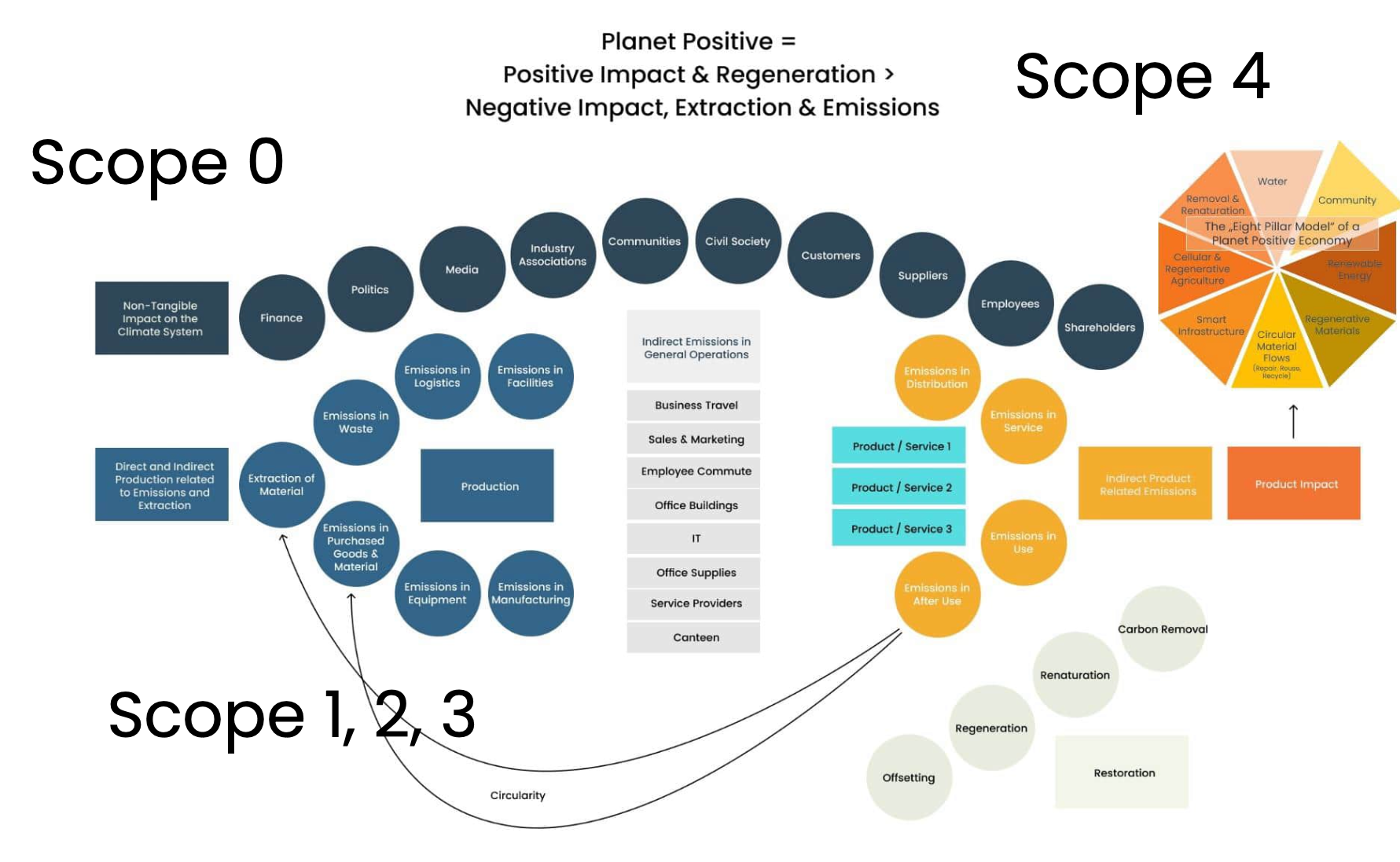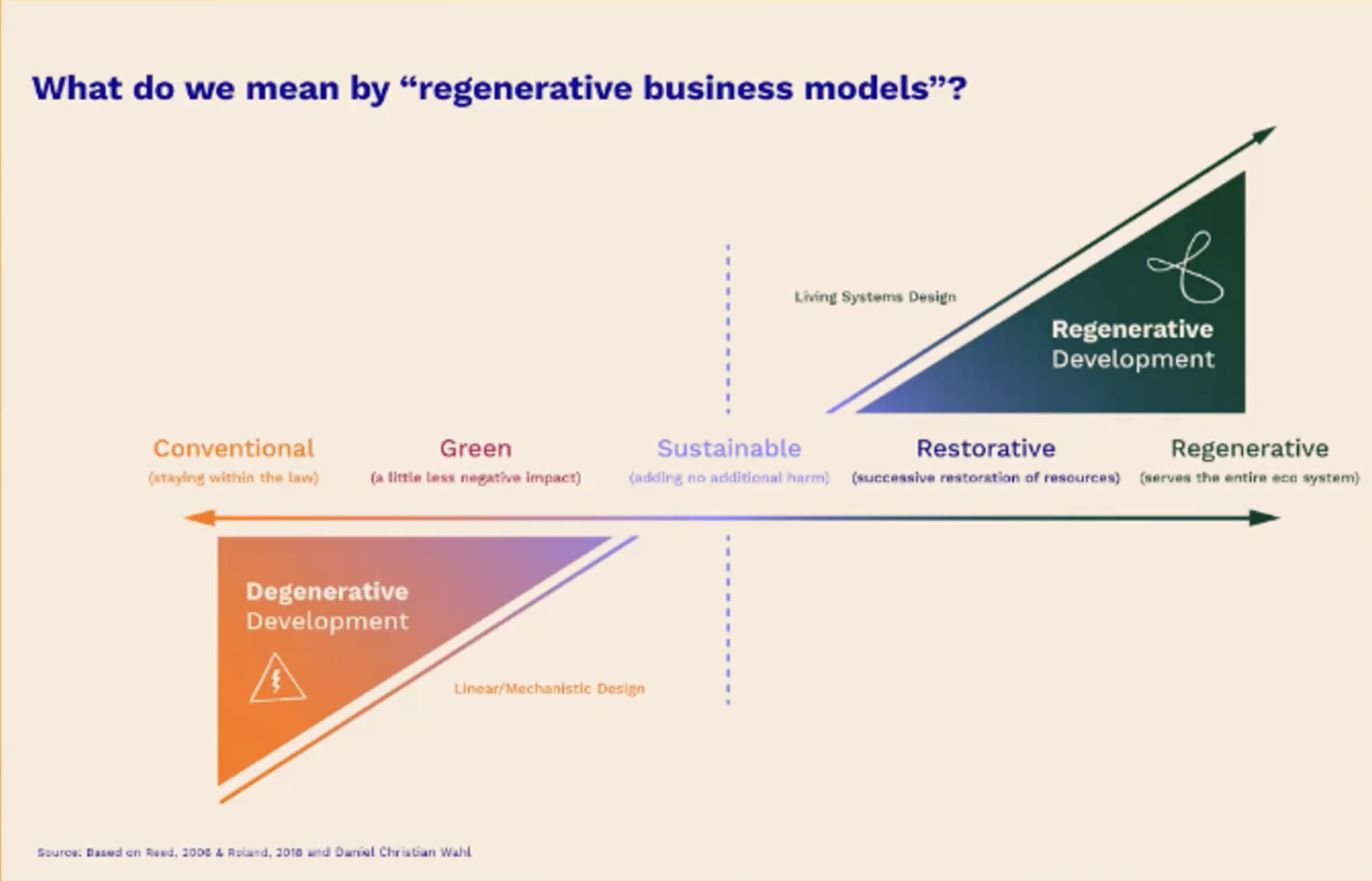How to Engage Your Workforce for Sustainability

Discover how to engage your workforce for sustainability, how and why employees are crucial to any company's sustainable transformation toward a regenerative business model, and how to make sustainability part of your business agenda as a company. Climate entrepreneur and HR professional Tim Riedel share with us actionable insights into how employees can play a crucial role in the sustainability transformation of our companies during his webinar; here are the main takeaways!
Did you miss Tim Riedel's webinar? Watch it FOR FREE
Get FREE recordingThe stakes are high
For the last 400.000 years, CO2 levels, temperature, and sea levels have been pretty much synchronized. If we increase the CO2 levels in the atmosphere, it would get thicker and thicker and the heat and energy of the sun would not get out beyond it any longer. So that means that the planet would get warmer and warmer, change the weather and temperature patterns, cause the ice to melt, and have a series of natural disasters along with it.
The CO2 levels have been stable at around 200-300 parts per million up until 200 years ago when they started to skyrocket and reached almost 420 parts per million. And that number is still rising.
A forecast of the climate action tracker says that by the year 2100 if all the governments deliver on the climate pledges we’ll still reach 2.7 degrees of global warming. This means that about 3.5 billion people will not be able to live in the places they live because of water shortages, heat waves, floods, extreme temperatures, and other natural disasters. Hundreds and hundreds of cities will be uninhabitable because of extreme heat.
So why aren’t we doing something about it?
We are very much focused on running in the same direction we have for thousands of years. We are part of a system – political and economic – that is forcing us to do what we have done all the time because everyone else is doing it every day too. Every morning we don’t ask ourselves why we’re doing something; we simply do it because we did it the day before.
Being in that system is painful and frustrating because it is kind of perpetrating the same behavior over and over. But if we change our behavior and we are very vocal about it then others will see the change too. There’s research that shows that in business, the so-called law of innovation says that if 16% of the market tips in one direction, then the rest of the market will follow too.
What role can employees play?
Employees can play a huge role in driving that system’s change. They are part of the system too, and some kind of energy shift, or momentum needs to occur there, and employees play a huge part in shifting that energy, that change to a tipping point so that the mass market can then follow.
If you care about your employees and you care about the engagement of your employees you shouldn’t let them feel a distance between what they want to do when it comes to contributing to sustainability and the company promises and commitment.
So how can employees help? According to the planetgroups model, here are two ways:
- Green Teams. They are founded and organized by employees and are usually not representative in composition. Green teams have high intrinsic motivation and credibility and the target is to raise awareness and develop project ideas within each department.
- If you support green teams then you should be able to provide professionalization and education to your employees. They don’t have skills and education in that field, so they need internal and external networking and communication and help for project organization to be effective.
- They also need to be constantly prioritized within the company otherwise, they will lose motivation, priority, and success factor.
- Climate ambassadors. Founded by management, they are usually more representative in nature. Climate ambassadors are usually more quickly and easily aligned with the corporate goals and objectives, thus seeing a more rapid implementation of their strategies. The target of climate ambassadors is to raise awareness about a topic and act as the middleman between upper management and the workforce.
- Their need for support is similar but not exactly the same as that of green teams because they are more or less aligned with what management wants. So, they need external networking, process support, and communication.
- Success factors are the same: continuity, resonance, and consistency by management and time resources.
Build a sustainability-focused community with your employees
Try Ambassify nowMaking sustainability part of the business agenda
If you treat sustainability or regeneration as something that you do on top of your normal work, as something ethical you do because you have to, you’ll never gain sufficient traction and it’ll never gain the results you need.
It has to be in everybody’s job from 9 to 5: instead of designing products and doing sustainability, you have to design sustainable products; instead of doing sales and then trying to be sustainable, you have to incorporate sustainability and regeneration in your sales process.
And that’s true for every single position and job title in your company, from sales, production, marketing, design, communications, HR, etc., in every organization. In every job family, the core question is: how can I do what I do anyway in a sustainable, regenerative fashion?

This is the planetgroups model to get sustainability into any business agenda.
First is the product & the product impact, how you make money. As companies, we are there to make money and be profitable and ensure the sustainable viability of our companies, so we sell products to customers.
So we have to ask ourselves, how do we make money in 10, 20, 30, 40 years? And how can we make money by actually regenerating the planet?
If we have the product in place, everything else will come on its own. Planetgroups identifies this as the non-tangible impact on the climate system: how we interact with finance, politics, media, communities, civil society, etc.
Most companies start with emissions reduction, but if you stop there, you’re not involving your employees and your customers. To really make an impact, you really have to change the strategy and the product. And, of course, you have to make sure you’re making up for the harm that you are still doing to the planet in terms of offsetting, regeneration, renaturation, and carbon removal.
So you have to ask yourself, how can I, with my employees and my customers, make up for it all? And there, take everything into consideration, from strategy and production to purchase. Involving your employees is part of an overall strategic and comprehensive view that’s gonna be the only way for you to really make an impact with what you’re doing as a company.
The ‘Eight Pillars’ model
This is a model comparing 8 topics that will be crucial in the future: renewable energy, regenerative materials, circular material flows, smart infrastructure, precision & regenerative agriculture, removal and renaturation, water cycles and irrigation, and community.
We have to use products and components that support this agenda and offer solutions that support this agenda. The way we are making money now is not sustainable in the sense that it will not be possible to make money the same way we are now in 30-40 years’ time.
The new economy paradigm will have to be circularity, regeneration, customer retention & community, collaboration, and well-being contributions.
It doesn’t mean that the old economy paradigms of growth, turnover, sales, competition, and profit won’t still be there, but the new ones will add to them and be the core focus of the economy.

The goal for companies is to get to the sustainable phase first and then become restorative and regenerative to revert the harmful effects of the economy on the planet.
There are four main success factors in engaging one’s employees in the regenerative and sustainable process:
- Be strategic. Do it as part of the change.
- Be consistent. Make sure you really see it from your customers and product’s perspective and then everything else will follow suit.
- Listen. It has to be all aligned: your product, your strategy, your brand – everything.
- Communicate in all directions. The transformation we have to see and we are in the process of seeing is a change process, so treat it as so. Set and communicate milestones, measure and analyze the gaps, and adjust the target and strategy in a collaborative process.